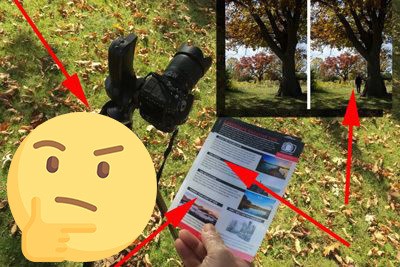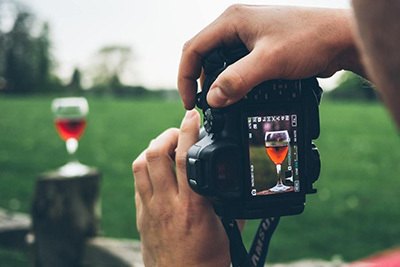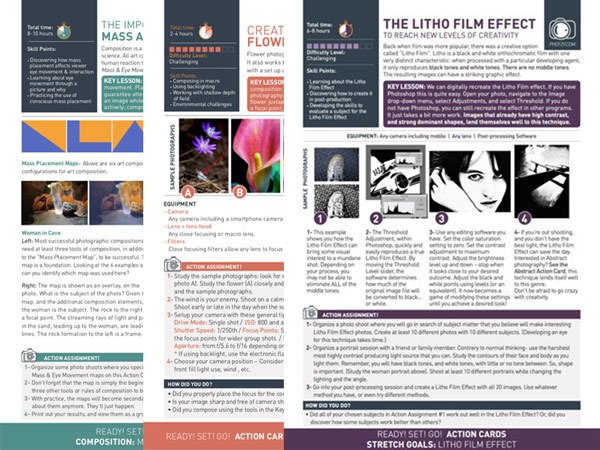Make no mistake – the discussion of framing and space in photographic composition is a complicated one. However, understanding these two concepts will elevate your work from amateur to pro.
Composition in photography is likely the most critical component when communicating a message. We all want to convey a statement with our photos. That’s why we take them. Something interests us, and we want to say something about it. It’s visual communication.
I see many discussions online where photographers say this is an art and I can do whatever I want. That is absolutely true. There is no art police, but there are accepted norms of composition that were developed long before you and I walked this planet. These norms are tried and true methods of helping the artist to communicate a visual message.
In this guide, we will learn:
- What is the frame in photo composition?
- What is the use of space in photographic composition?
- What is negative space?
- What is a frame break, and why is it generally not a good idea?
- Commonly accepted norms of framing and space
- How to use framing and space to guide a viewer’s eyes
- Improving the use of framing and space in post-production
- Diagnosing the framing, space, and composition of a photo
- Choosing your frame and space in-camera
- Unusual uses of frame and space
Recommended Reading: If you’d like to improve your composition skills for better images, grab a copy of Photzy’s best-selling premium guide: Understanding Composition.
What Is the Frame in Photo Composition?
Simply put, the frame is the boundary of the photo. That frame can be any shape.
What Is the Use of Space in Photo Composition?
The use of space is a bit more complicated to understand than the frame. Look at it like this. The frame creates an area of space. Use of that space is where you (the photographer) place every element within the space. That process of placement is known as composing the image.
Let’s Take a Look at the Cover Photo Before It Was Edited

This photo depicts a beautiful big cat in an amazing situation with gorgeous light. However, it could be better.
How? Firstly, it needs better use of the frame and space. Let me show you.
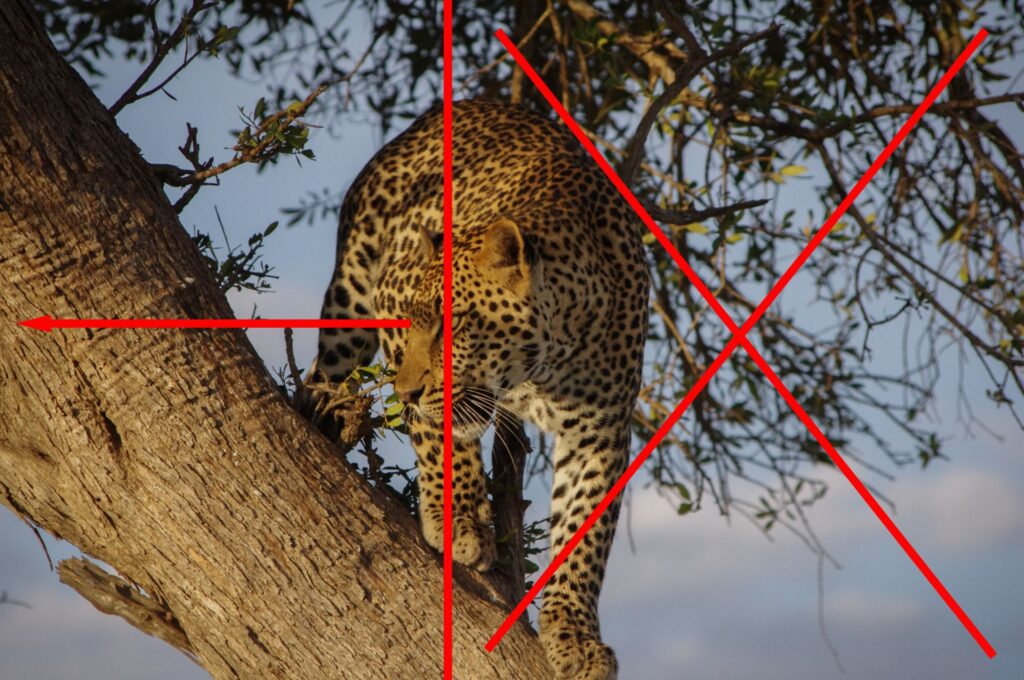
Photograph by Hidde Rensink and Graphics by Kent DuFault
Straight from the camera, the entire right two-thirds of the frame is wasted to negative space.
Key Lesson: Negative space is any area within the frame that isn’t the subject. Using the negative space properly creates a balance for the viewer. Poorly executed negative space creates an imbalance that causes tension and a feeling of something being off. An imbalance in negative space is also known as an asymmetrical composition. So, it’s not always a bad thing, but it should be intentional.
At the end of this guide, I’ll share with you an asymmetrical composition that was intentional.
Secondly, this framing has created a frame break.
Key Lesson: In photo composition, a frame break occurs when a moving object, or a person or animal, is moving or looking to the short side of the use of space.
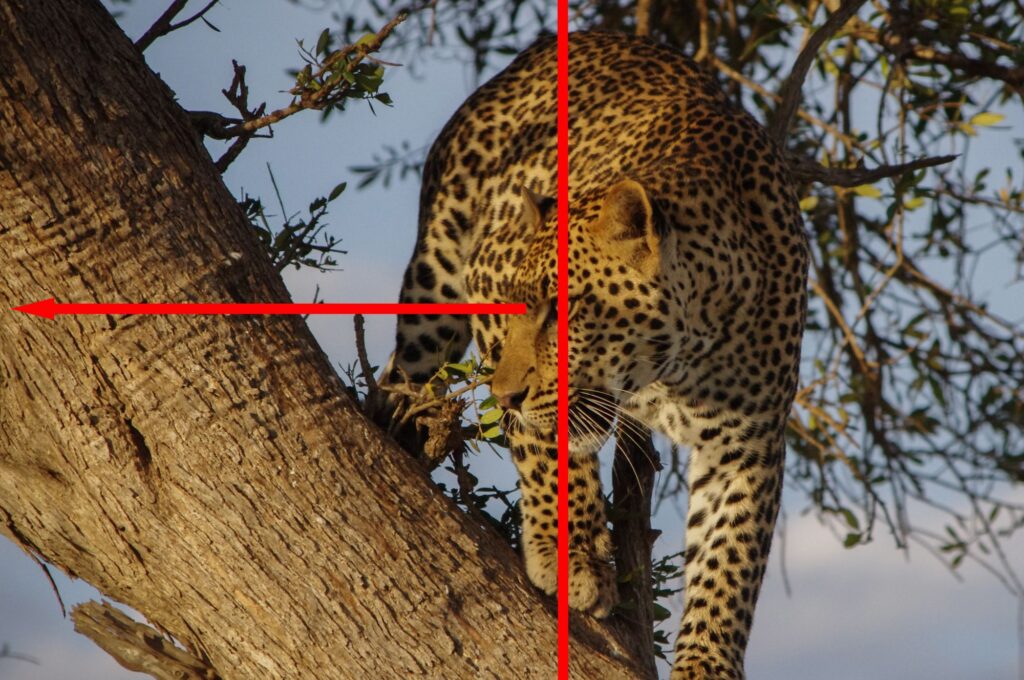
Photograph by Hidde Rensink and Graphics by Kent DuFault
In the image above, you can see that the frame is divided into a 1/3 – 2/3rd use of space, which is a common and accepted practice. However, the big cat is looking intently at the short side of the space. This is a frame break. Again, it is not the worst thing in the world, but it can be improved. Let me show you how.
By applying a minor crop to the original, I have rearranged the framing and space to eliminate the frame break without altering the intent of the original photo.
Let’s look at this one more way.
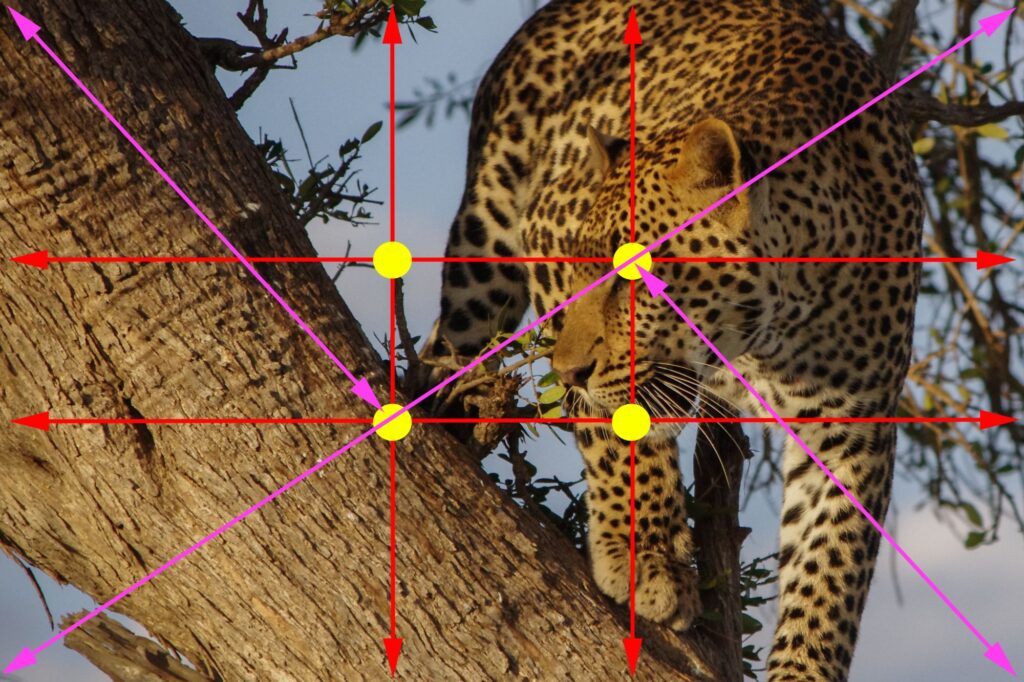
Photograph by Hidde Rensink and Graphics by Kent DuFault
Wow! That looks complicated, doesn’t it?
Truthfully, it’s not. It’s just another way of evaluating the use of the frame and space. Notice where the cat’s eyes land within the frame and the use of diagonals to create direction. This is how the cover photo was presented to you.
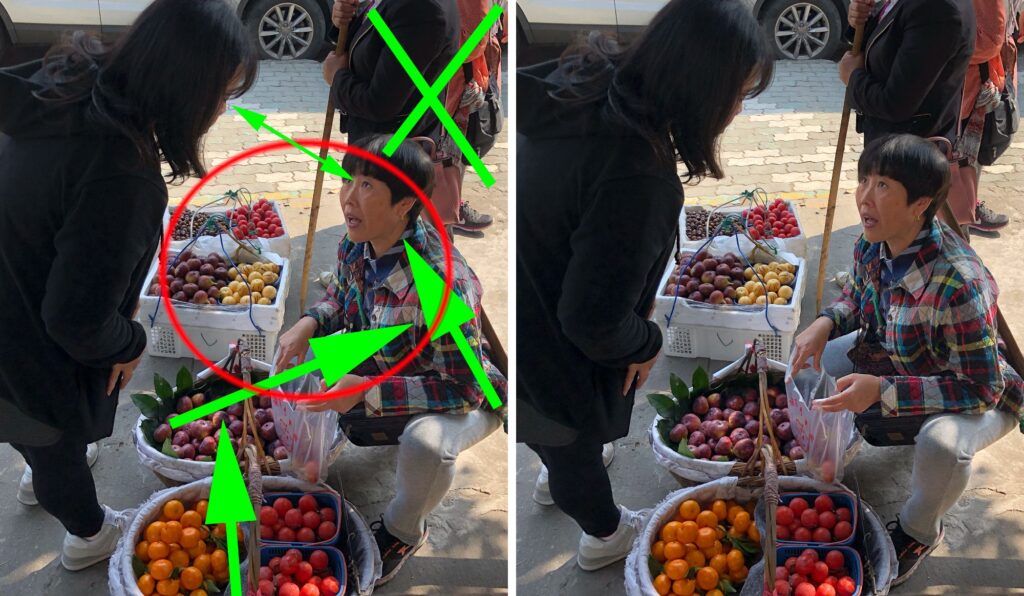
Photograph and Graphics by Kent DuFault
Key Lesson: Learning to evaluate the frame and space of the scene unfolding in front of you is crucial to your growth and success as a photographer.
Let’s Look at Some Commonly Accepted Uses of the Frame and Space in Photo Composition
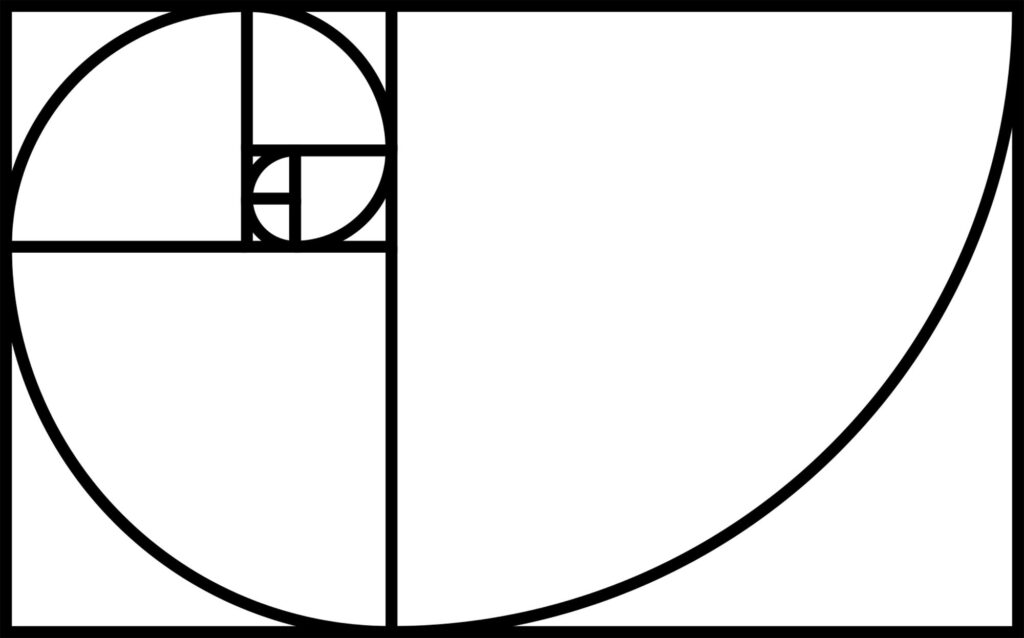
This graphic depicts the grandfather of all composition concepts regarding the use of frame and space. Graphic by Kent DuFault
You will find this same design under several names: the Fibonacci Spiral, the Golden Spiral, and the Golden Mean to name a few.
This design is tied to every other use of space in photography. The Rule of Thirds is represented here, as is the 1/3 – 2/3rds Rule and others.
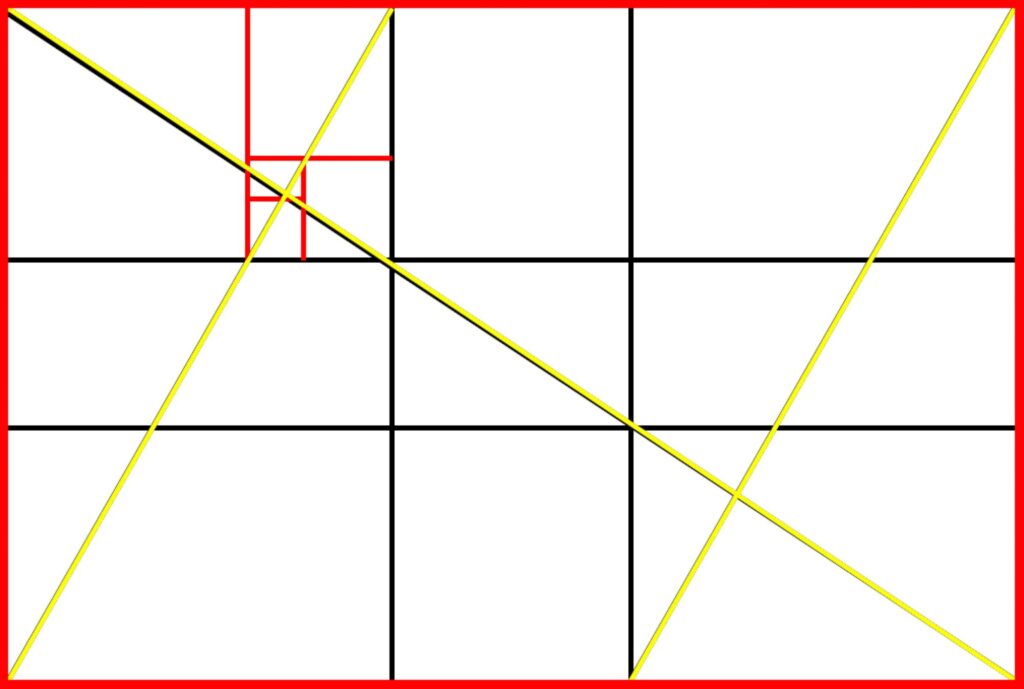
This graphic represents the Fibonacci ‘sweet spot’ with the Golden Ratio grid and the Triangle grid laid over it. This use of division and space was incorporated into the image on the page (image #5) of the big cat. Graphic by Kent DuFault
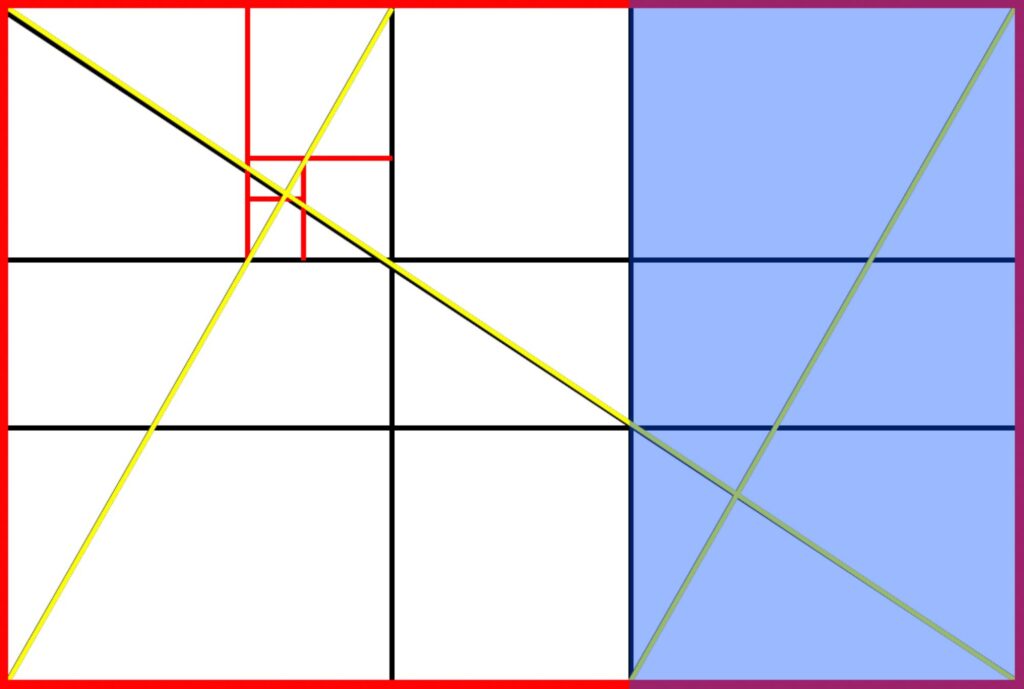
This graphic depicts the 1/3 – 2/3rds vertical division of space in the horizontal (some folks call it portrait) use of framing. Graphic by Kent DuFault
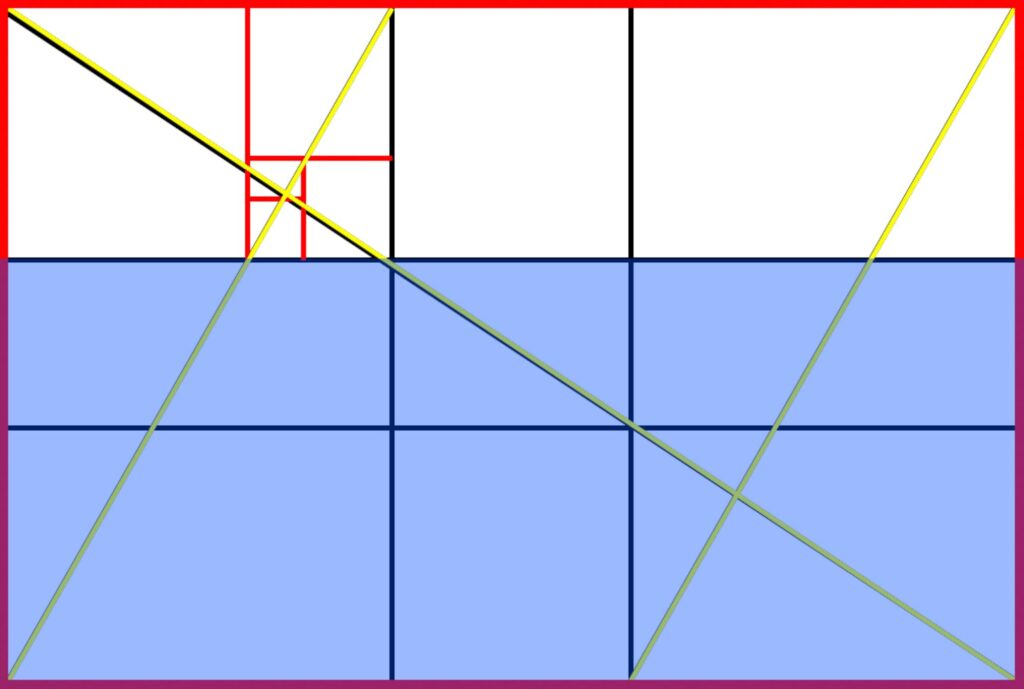
This graphic depicts the 1/3 – 2/3rds horizontal division of space in the horizontal (some folks call it landscape) use of framing. Graphic by Kent DuFault
What does a vertical (some folks refer to it as portrait) use of framing look like?

This graphic depicts a vertical frame with the following uses of space overlayed within the frame: the Rule of Thirds (blue), the Golden Spiral ‘sweet spot’ (red), the Golden Ratio grid (black), and the Triangle grid (yellow). Graphic by Kent DuFault
I’m sure you have put one and two together and realized that horizontal versus vertical framing is how you hold the camera when taking the picture. This is far more important than many photographers realize because everything we see has a natural flow that should help a photographer choose the proper frame.
I’m sure you have put one and two together and realized that horizontal versus vertical framing is how you hold the camera when taking the picture.
Key Lesson: Natural flow is how a scene is laid out in front of you. For example, if a skyscraper is in front of you and your eyes are going up and down looking at it, then the natural flow is vertical. If a river is flowing by in front of you and your head is moving left to right to look at it, the natural flow is horizontal. Is it bad to photograph a subject with the wrong framing? You know, not taking into account the natural flow? Not necessarily. But there should be a reason for it. Recognizing the difference and making choices is the role of a pro-level photographer.
Recommended Reading: If you’d like to improve your composition skills for better images, grab a copy of Photzy’s best-selling premium guide: Understanding Composition.
Framing and Space Guides a Viewer’s Eyes
When you see something interesting and decide to take a picture, one of the first questions that should enter your mind is, “What am I trying to communicate here?” Then you should ask, “How do I organize the elements in the scene to communicate my thoughts on this moment?”

I cannot know the photographer’s thoughts when taking the image above. But to me, the meat of the photo is the man and the woman and their happiness together. They have a good relationship.
I don’t think the framing and use of space are very effective for that message. There is a lot of negative space that isn’t part of the story.
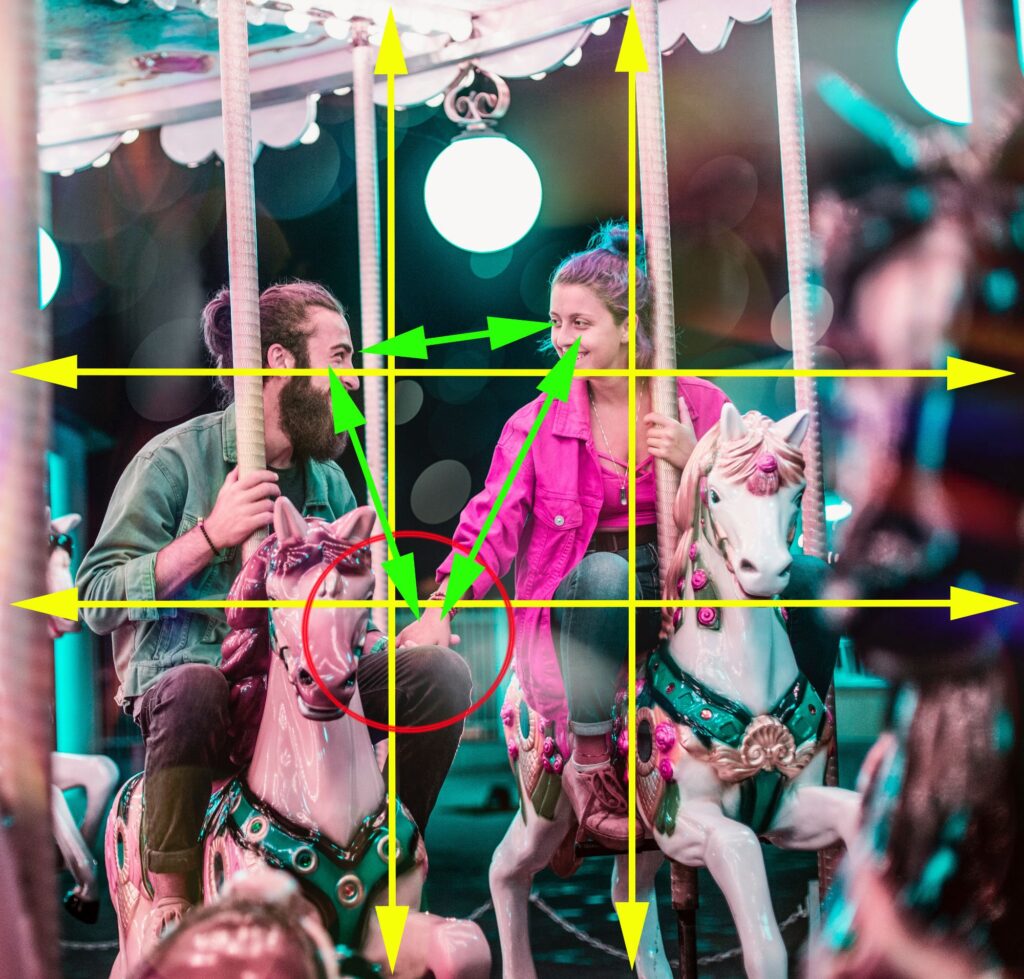
Photograph by Sept Commercial and Crop/Graphics by Kent DuFault
By rearranging the frame and use of space, the message becomes dominant.
I would like to point out several things in the image above.
- Breaking down your photos into diagrams will help train you to see in visual weight, which is a critical aspect of the format and space.
- The eye contact and touching hands create a triad of points. Composing in triangles is a known composition tool that works very well. That same triangle was in the image on the previous page but was lost to the framing and use of space.
- Note that the heads of the two subjects and the carousel ponies fall near a cross-section for the Rule of Thirds.
- The frame is now a square instead of a rectangle. Don’t be afraid to experiment with framing other than the standard rectangle. More on that in a minute.
Breaking down your photos into diagrams will help train you to see in visual weight, which is a critical aspect of the format and space.
Composing In-Camera Versus in Post-production
Composing in-camera is the gold standard that we should all strive for. And I can tell you from experience that the more you shoot while actively composing in-camera, the better you will get at it. The skills you will develop are anticipation and timing. But more on that in another guide.
Once you have a shot, you can make space and framing changes in post-production.
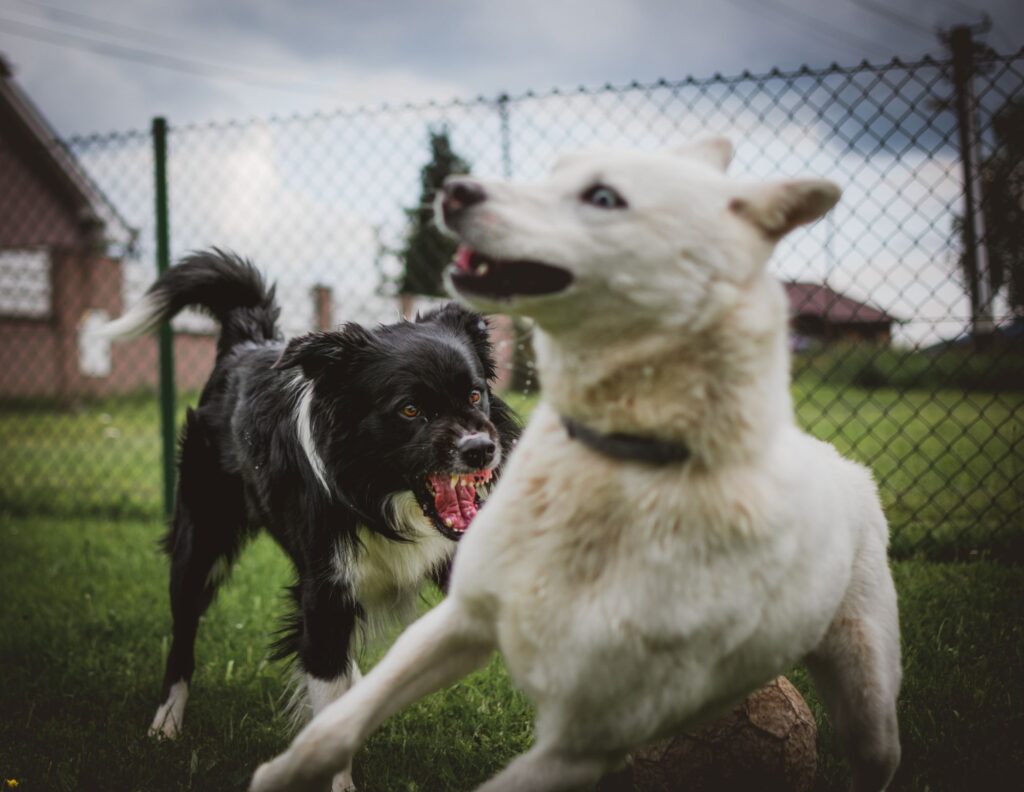
The image above is a very dramatic picture. But I think it can be improved in post-production by changing the framing and use of space.

Notice how much more dramatic this version is compared to this image. The distracting negative space has been removed. Compare this image and the image on the previous page. Photograph by Tadeusz Lakota and Editing by Kent DuFault
Evaluation Is a Pro-level Skill
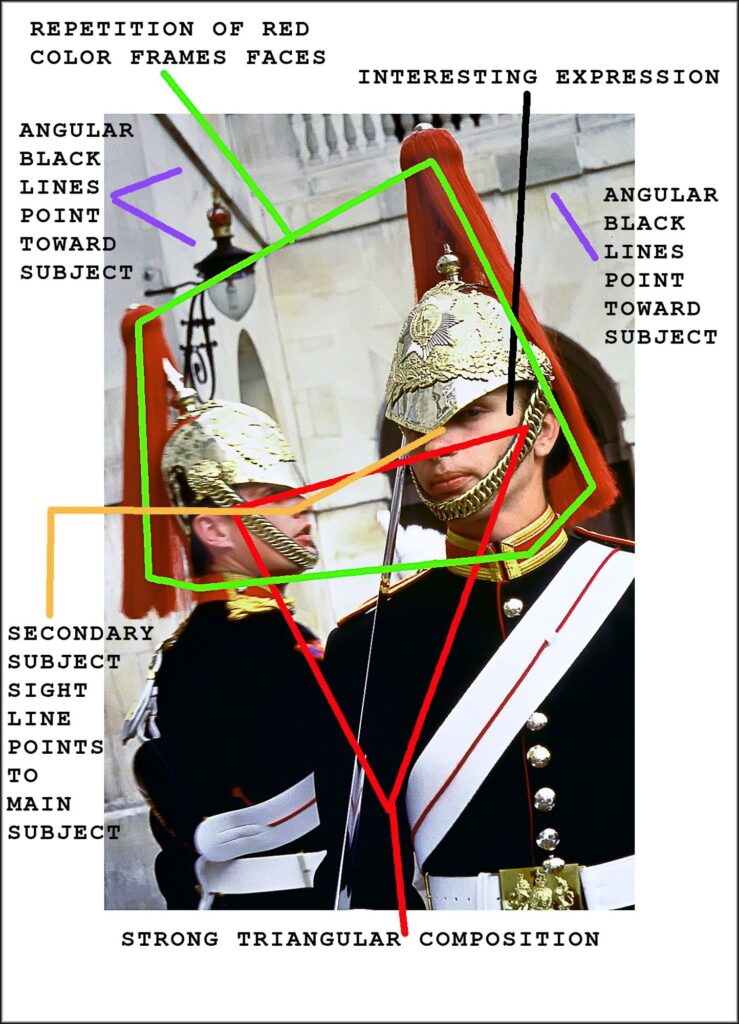
This image dates all the way back to 1995. That’s how long I have been dissecting and evaluating my framing and use of space. Well, my compositions, in general. Photograph and Graphics by Kent DuFault
Do you see the natural flow here? What if I had shot this horizontally?
When I Have the Time, I Carefully Compose in the Camera

When I came upon this scene, this man was relaxing and not going anywhere. I had plenty of time to compose the shot in the camera. Photograph by Kent DuFault
I gave careful consideration to my frame and my use of space. Before you go on to the next image, draw what you think my intent was for the composition of this picture.
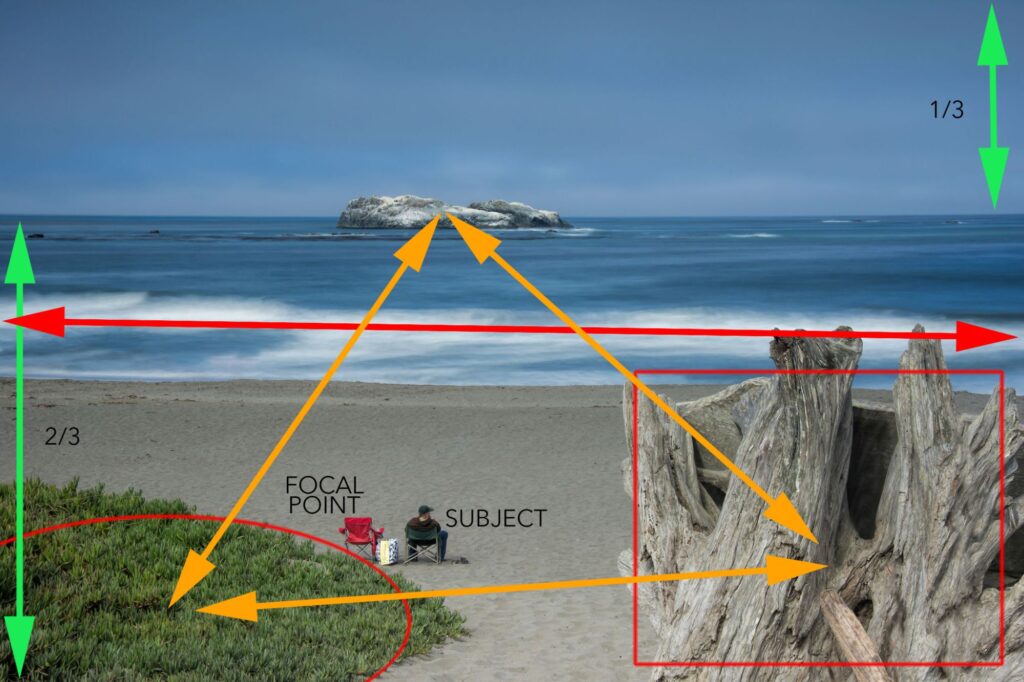
Photograph and Graphics by Kent DuFault
Here was my decision-making process:
- The natural flow was horizontal, so that is how I oriented my camera.
- Most of my storytelling elements were in the foreground. So, I allotted one-third of the frame to the sky and two-thirds to the water and beach.
- I encircled my subject area with a triad of points, including driftwood, grass, and rocks. This use of a triangle also created a vibrant sense of depth and distance.
- I set it up so that the red chair became a powerful focal point for the man’s position.
- My camera setup left more negative space on the right side of the frame. The man was looking back and forth. I waited until he looked to the right so as not to create a frame break.
Key Lesson: When you have the time, consider your framing, use of space, and other composition elements in the camera. When you don’t have time, shoot the best that you can and fine-tune these elements in post-production.
Alternative Use of Framing and Space

After I photographed these daisies, the rectangular frame just didn’t live up to the moment, so I cropped it to a circular frame and I loved it! Photograph by Kent DuFault

This image breaks all the composition rules. But I love it! Photograph by Kent DuFault
Yes, there are rules, but this is still art. Don’t be afraid to break the rules, but always have a reason for it.

Earlier in the guide, I alluded to sharing an intentional frame break. This image is the photo that I was referring to. Photograph by Kent DuFault
I created the frame break by leaving more room at the top than at the bottom. Why did I do that? I wanted to tell the story of this massive stone structure that this tiny girl was exiting from. Without the arch dwarfing her petite body, that entire story was lost.
Recommended Reading: If you’d like to improve your composition skills for better images, grab a copy of Photzy’s best-selling premium guide: Understanding Composition.
Self-Check Quiz:
- Why is composition essential?
- What is a frame break?
- What is negative space?
- Name one accepted norm in the use of framing and space.
- What is natural flow?
- Why is it important to break down your photo compositions into diagrams?
- What geometric shape that has three points is a powerful composition tool?
- When you have the time while shooting, should you compose in-camera or in post-production?
- Is the use of alternative frames, such as a circle, acceptable?
- Is a frame break sometimes of value to a photo message?



